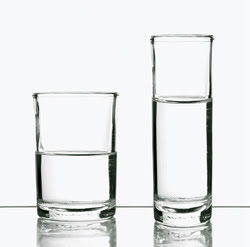
Believe it or not, your home environment shapes your habits and therefore how much you eat. How?? Voila! (I also added some tips to help you out.)
Visibility and Accessibility
You eat what you see! This includes what is visible on your kitchen counter and in your kitchen shelves. You’ll eat more chocolate, candy, or cookies if there’s a bowl somewhere in the living room or on the kitchen counter, as you’ll see them every time you walk by, in a VERY easily accessible location. Think of how we tend to place the bowl of fruits on the counter when we want our kids to eat more fruits.
When it comes to kitchen shelves, think about how hard it is to resist reaching out to that bag of chips or crackers when you see it every time you open the cupboard?
Tip:
- Make sure you choose the food items to store on your counters. Avoid using food as decoration.
- Rearrange your kitchen cupboards in a way to place healthier food items at eye level, and the items you want to eat less often in an inaccessible and less visible spot. It’s simple: out of sight, out of mind!
Variety
Yes, variety! The more choices we have, the more we are tempted to eat. Imagine you were having a birthday party or a simple gathering at your place and you bought (or someone brought) a chocolate cake, a cheese cake, and an apple pie. Now you have 3 options to choose from. There is a higher chance that you will be eating more dessert, as you’ll probably want to try all of them. In a study, people who were given 3 types of yogurt ate 3 times more yogurt than those who were given 1 type only. Same thing applies to eating at a buffet; think of all the options you would want to taste and try.
Tip:
- Be aware of your surroundings and make sure you take smaller servings if you decide to try every option you are offered.
The size of your tableware
This is related to control over serving size. We tend to take bigger servings when we have a larger plate or bowl, thus we eat more. This is called the serving illusion. Same thing applies to liquids: people tend to pour more of a drink into a short flat glass and less in a tall thin glass. This is because the same amount seems smaller to the eye in the short flat glass (see picture).
Tip:
- Have you looked at the size of your tableware?

Where and How You Eat
When we eat in front of a screen (TV, computer-laptop), while reading a book – newspaper, or while working at a desk – we are multitasking. This means our brain is not focused on the act of eating and we are not connected to our senses or our satiety and hunger signals. As a result, we are easily tempted to overeat because we lose track of how much we are eating.
The way we eat also plays an important role in how much we eat. When we eat directly from the bag or package, it is very hard for us to control our servings.
Tip:
- Do not multitask while eating. Dedicate your time and attention.
- It is best to eat sitting in the kitchen or living room.
- To better control your servings, buy food such as chocolate and ice cream packaged in single servings. Also, buy smaller packages instead of super-sized packages.
These small details can make us eat mindlessly instead of mindfully enjoying food.
What about your home environment?
Joelle Khairallah, Dt., M.Sc
Reference
Nutrition Nibbles. Big dishes, Big portions. 2008
How Your Food Environment Affects How Much You Eat is a post from Nautilus Plus. The Nautilus Plus blog aims to help people in their journey to fitness through articles on training, nutrition, motivation, exercise and healthy recipes.
Copyright © Nautilus Plus 2017

